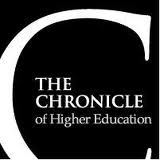 Students and States Near a 50-50 Split on the Cost of Public Higher Education
Students and States Near a 50-50 Split on the Cost of Public Higher Education
By Eric Kelderman, The Chronicle of Hogher Education, March 6, 2013
Public higher education is about to cross a historic threshold, in which students pay a higher percentage than do states of the operating costs of colleges.
Net tuition revenue made up 47 percent of public colleges’ educational costs in 2012, an increase of more than six percentage points from the previous year, according to an annual report from the State Higher Education Executive Officers.
In 1987, the report says, net tuition revenue accounted for just 23 percent of those costs. In 2001 tuition was a little more than a third of the costs.
Tuition has already amounted to more than half of the educational revenue in some individual systems, ranging from the University of California to the community colleges in Iowa and in South Carolina. But surpassing that threshold nationally is a gloomy milestone that reflects the deep state budget cuts that have hit public higher education since the beginning of the economic downturn and, at the same time, steady increases in enrollment.
Per-student spending on education from state and local sources fell to less than $5,900 in the 2012 fiscal year, a 9.1-percent decrease from 2011 and a quarter-century low for the third consecutive year.
Paul E. Lingenfelter, president of the executive-officers association, said the figures were unprecedented in his 40 years in higher education.
“Tuition revenues are up substantially due to higher prices and more enrollments, but not enough to offset losses of public funding,” he said in a news release accompanying the report. “Students are paying more, while public institutions are receiving substantially less money to educate them.”
The increasing costs to students have gotten significant attention, the report says, but rising tuition bills are not the fault of excessive spending. “Per-student spending in public institutions has been flat or declining since 2000. Recent tuition increases are driven primarily by the failure of public support to keep pace with enrollment growth and inflation,” the report concludes.
The growing burden on students and the cuts in spending to educate them will undermine the nation’s economic competitiveness, said Marshall A. Hill, chairman of the executive-officers association’s executive committee and executive director of Nebraska’s Coordinating Commission for Postsecondary Education.
“Other countries are rapidly improving the postsecondary education of their citizens,” Mr. Hill was quoted as saying in the news release. “If the United States falls further behind in either quality or the number of students who enroll and graduate, it will not be easy to catch up.”
0 Comments